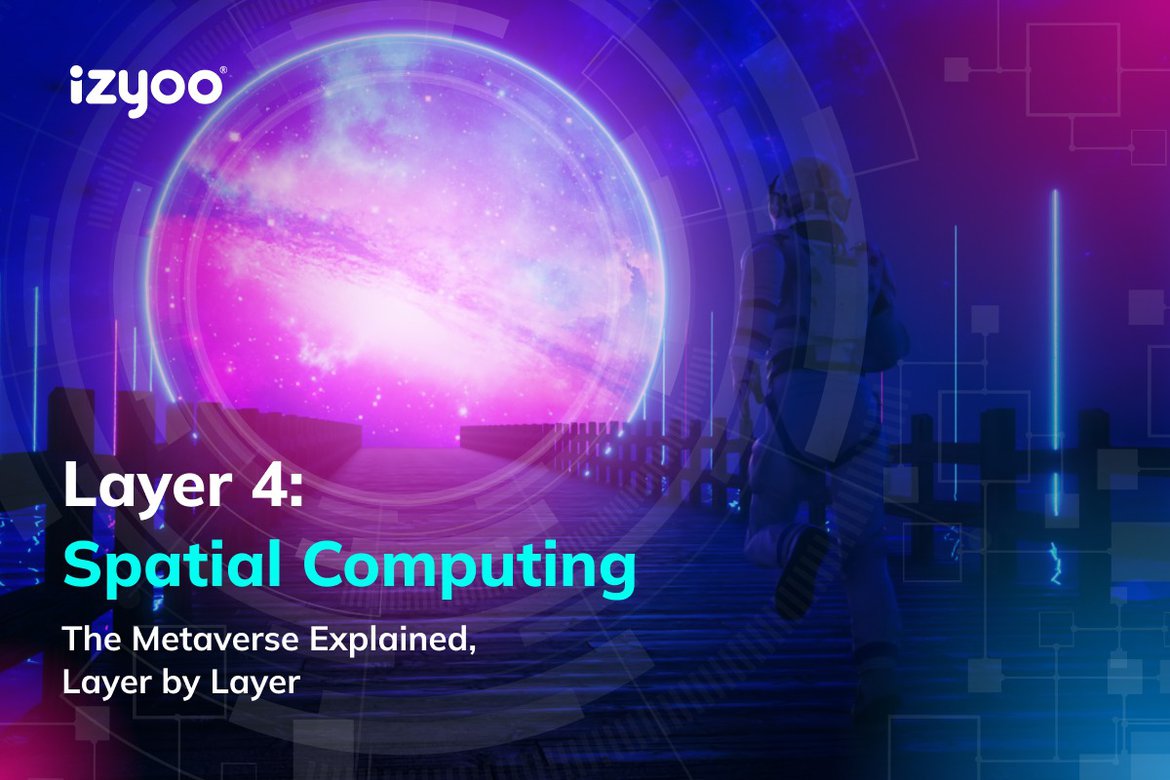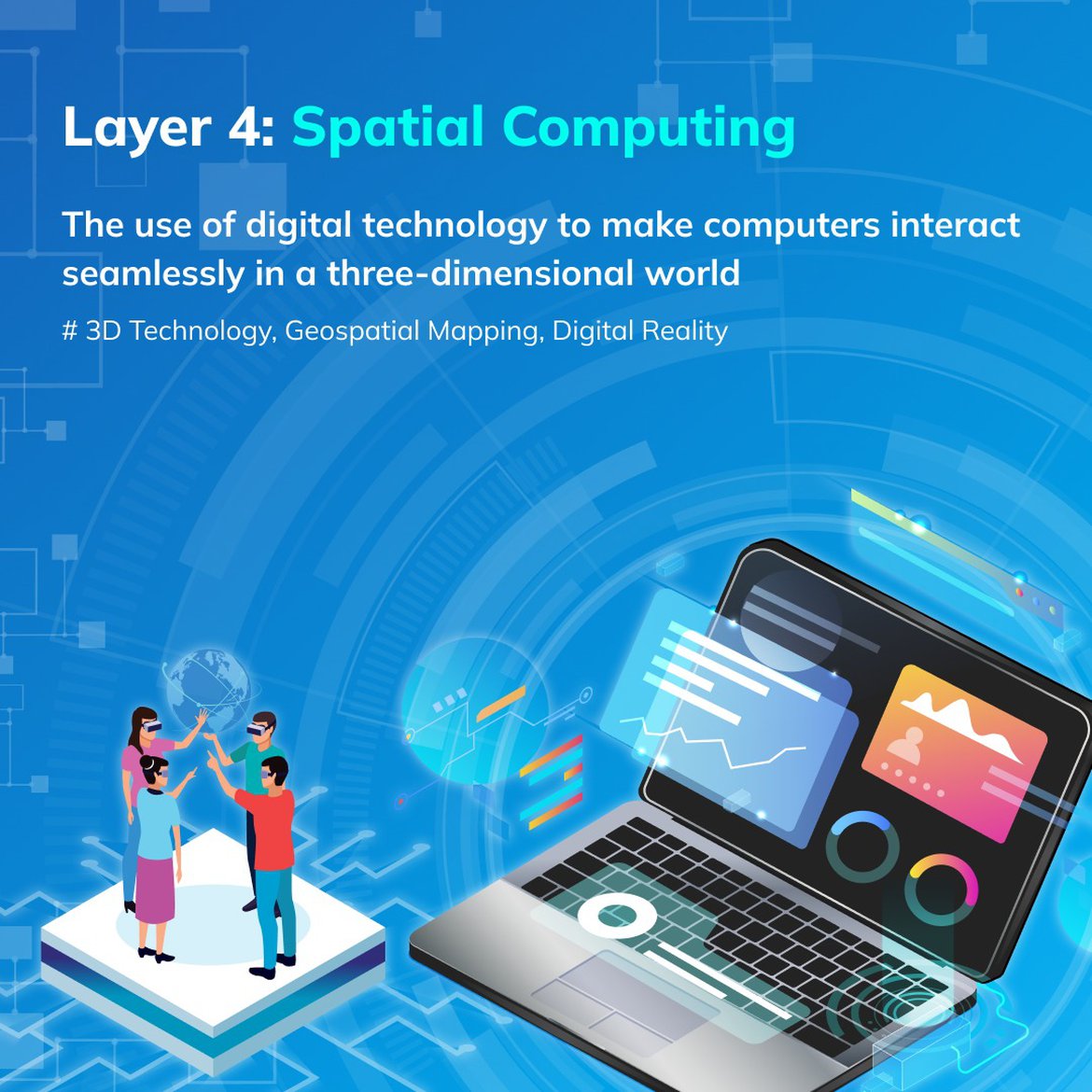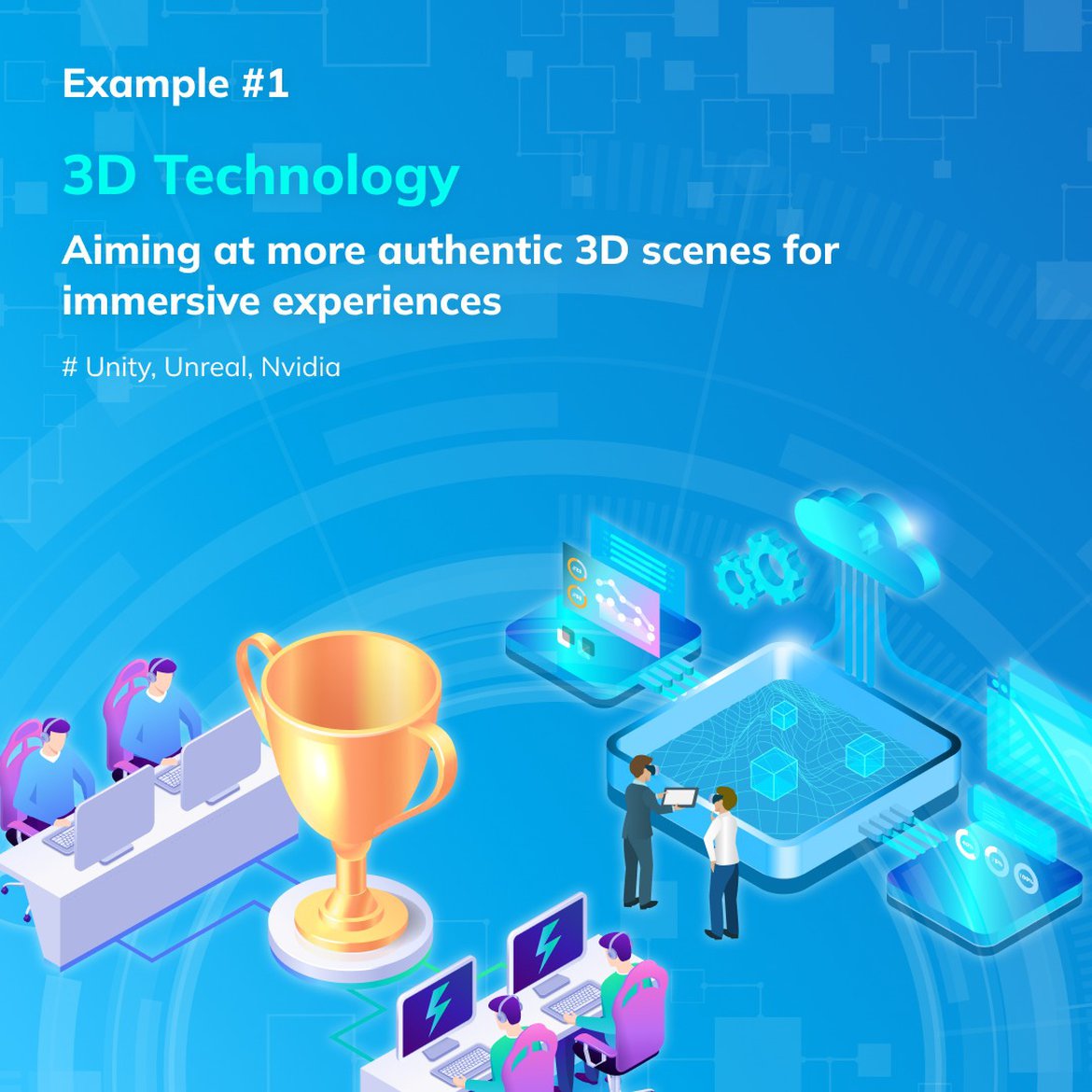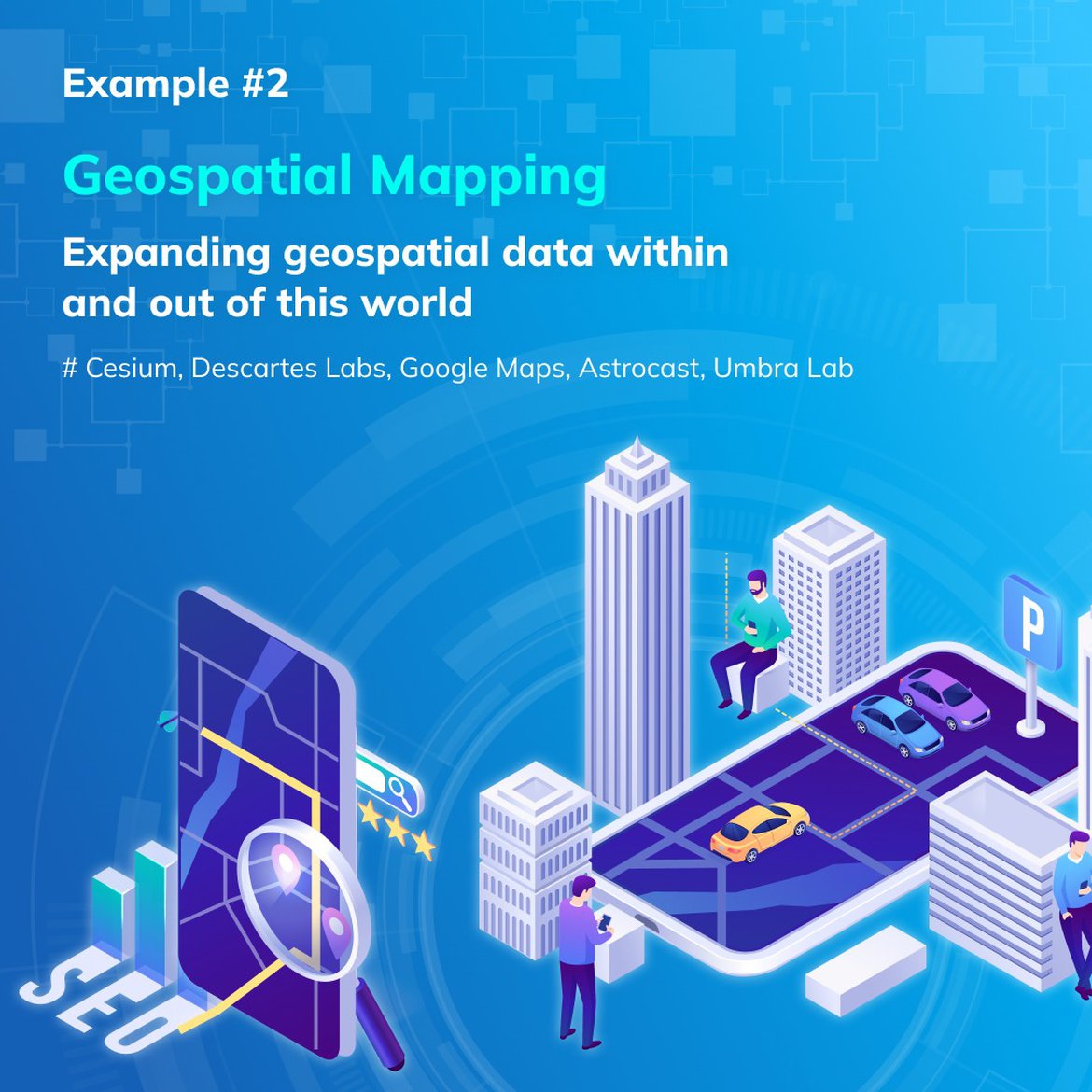
The metaverse combines multiple elements of technology, including virtual reality, augmented reality and video where users "live" within a digital universe.
Many people who are in favour of the metaverse envision individuals working, playing, and staying connected with friends through this virtual world. But could there be more to the metaverse than this?
Understanding the metaverse and its 7 layers may give you a better picture of this sci-fi buzz that everyone’s been talking about. Today, we’ll take a look at layer 4—Spatial Computing.

Spatial computing refers to the blending of physical and virtual spaces. This may include manipulating online 3D spaces into what seems "realistic" or augmenting the real world with immersive digital experiences. It is what breaks the barrier that exists between physical and virtuals spaces.
Such layer is what supports the metaverse to be an interactive virtual world and it is what permit us to beautify our actual world. This layer of spatial computing may refer to 3D technology, geospatial mapping and digital reality.

3D technology has been largely prominent in the entertainment or gaming industries. Such 3D technology that contributes to the metaverse may include 3D engines and other 3D creation tools.
Existing 3D engines like Unity and Unreal are already creating animations that closely mimic the experience of physical reality. On the other hand, Nvidia provides an Omniverse where creators can collaborate in an interoperable 3D space, helping businesses of any size transform their 3D production workflows.

Geospatial mapping is a form of spatial analysis technique that uses sophisticated software to analyse data about geographical or terrestrial databases. This technique is often used in modelling, visualization, analysis, and simulation of maps. In the metaverse, the possibility for an immersive experience can be merged into mapping and navigation. Imagine 3D maps with terrains, building volumes, and detailed surroundings.
Some use examples of geospatial mapping are Cesium, Descartes Labs and Google Maps. Leaning towards a more “out of this world” context, geospatial data is expanded by companies like Astrocast which is developing satellite networks whereas companies such as Umbra Lab are focused on creating high-resolution satellite imageries.

Digital reality comprises a wide spectrum of technologies such as augmented reality (AR), virtual reality VR and mixed reality (MR). Whether it is creating an overlay of digital elements that allow the interaction of physical and digital elements by MR or creating a fully-immersive digital environment with VR, such technologies are vital to the construction of the metaverse.
For instance, MetaVrse was launched with the aim to unlock the power of spatial computing (3D/XR) for everyone through their 3D Web engine supporting business and education. While the launch of Pokemon Go also sparked a new wave of augmented reality exploration, this is also the technology behind social media filters that changes a user's facial features on Snapchat and Instagram.
原文:https://www.facebook.com/iZyooPlatform/photos/pcb.5143633255703845/5143615302372307
-
The Metaverse Explained, Layer by Layer - Layer 5:Decentralization
by justin May 13, 2022
-
The Metaverse Explained, Layer by Layer - Layer 3: Creator Economy
by justin May 13, 2022
-
The Metaverse Explained, Layer by Layer - Layer 2: Discovery
by justin May 13, 2022
-
The Metaverse Explained, Layer by Layer - Layer 1: Experience
by justin May 13, 2022

